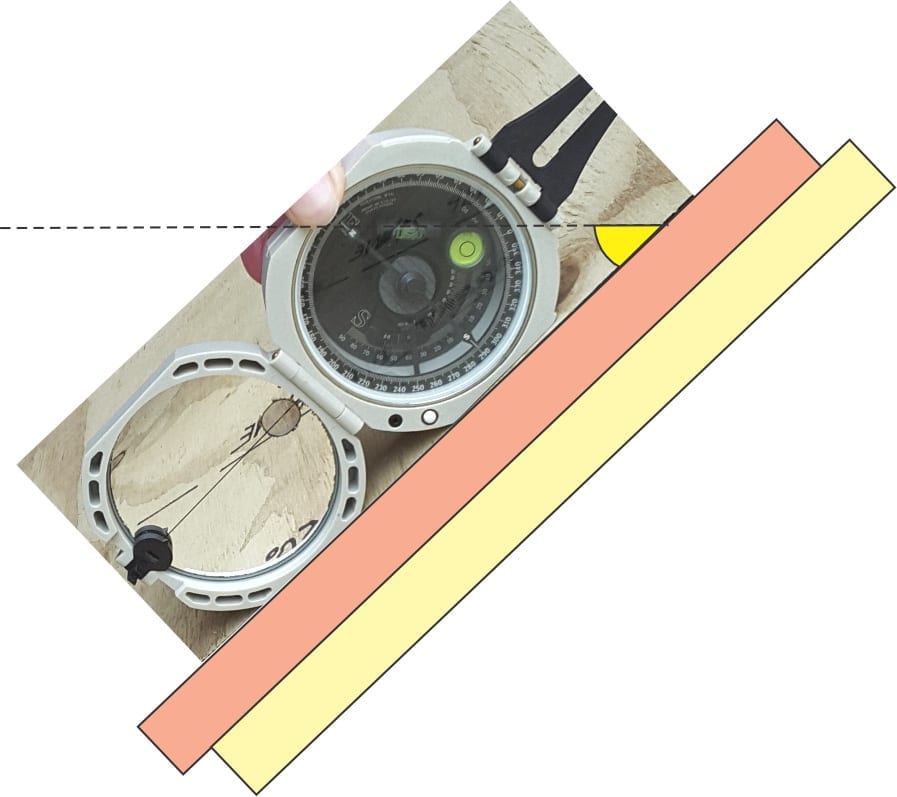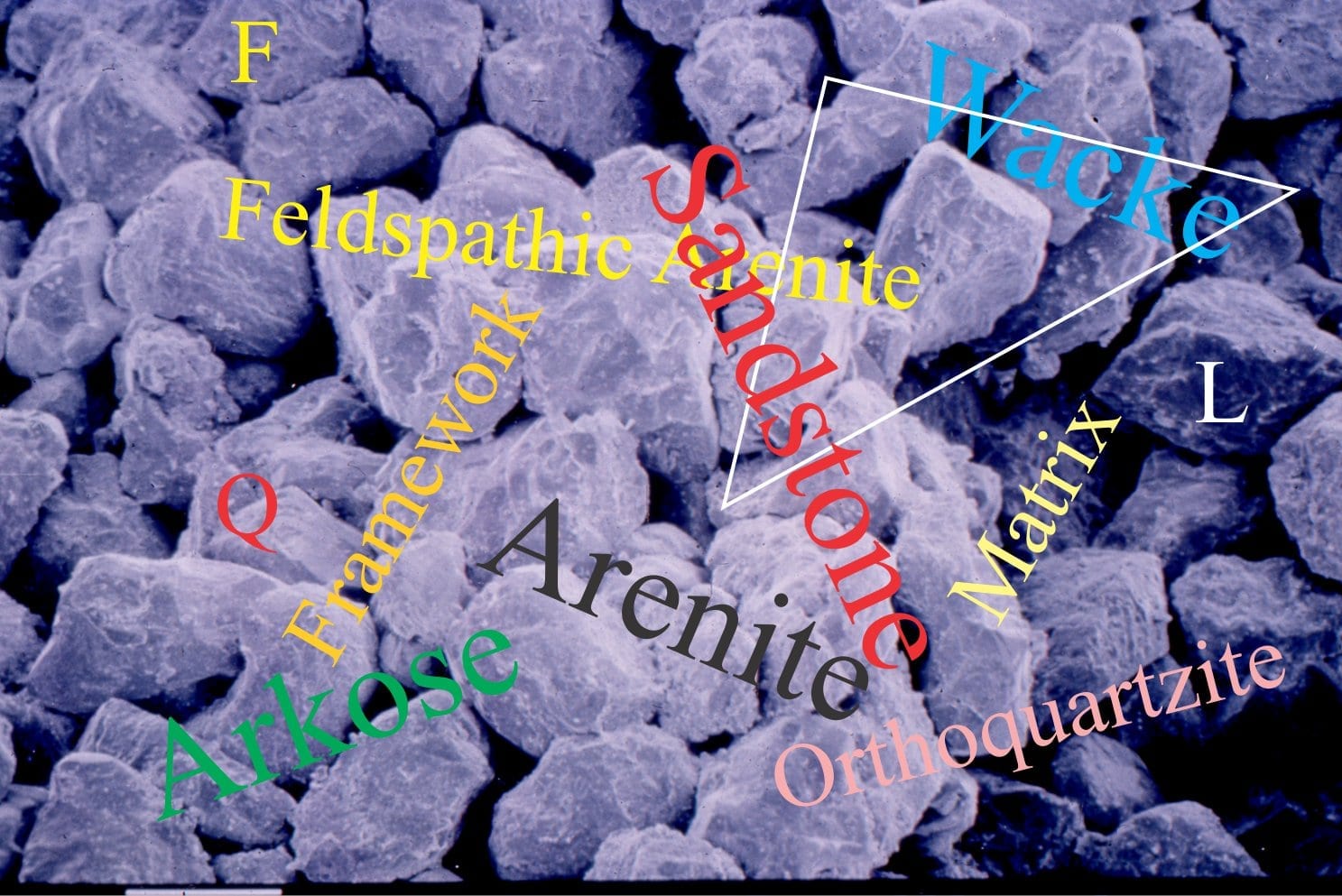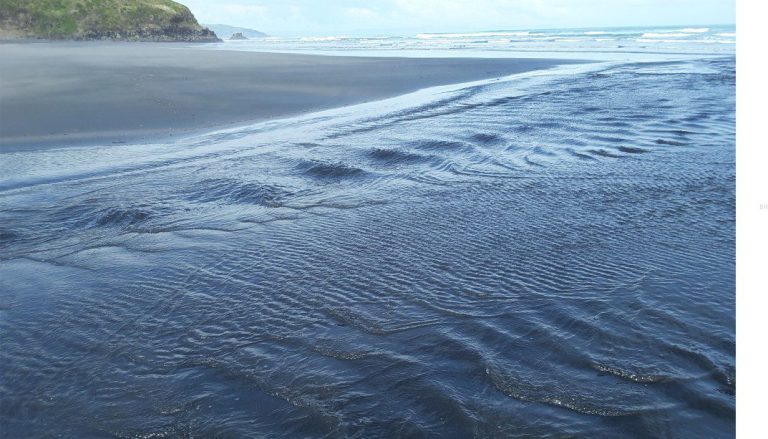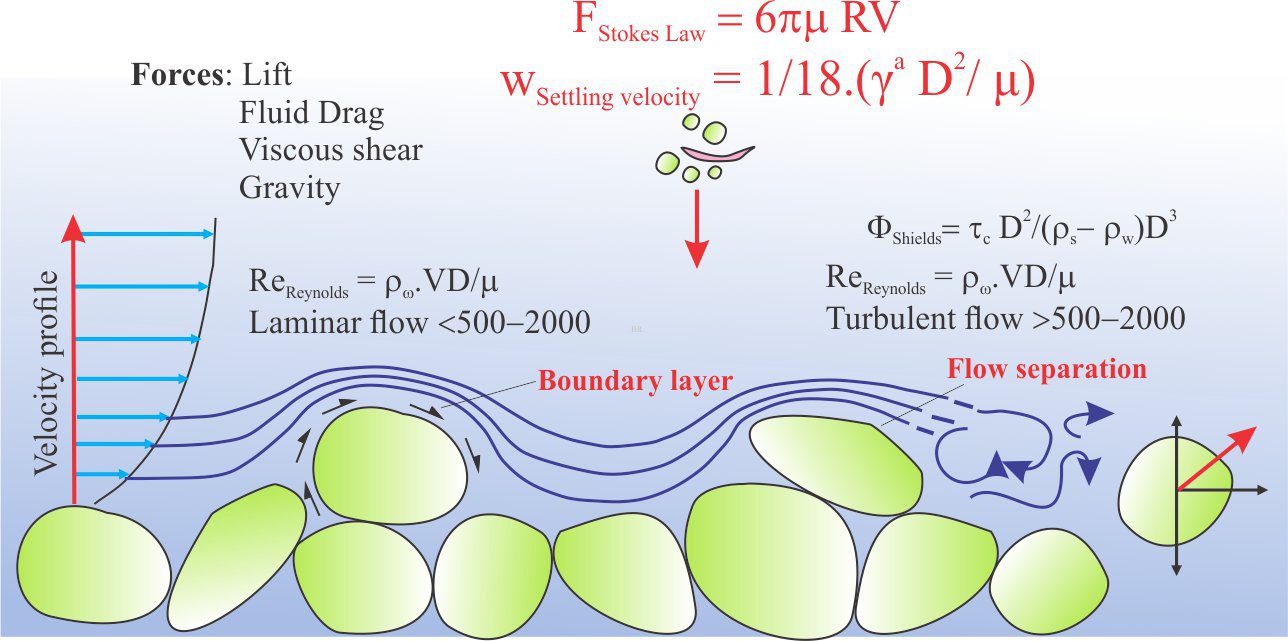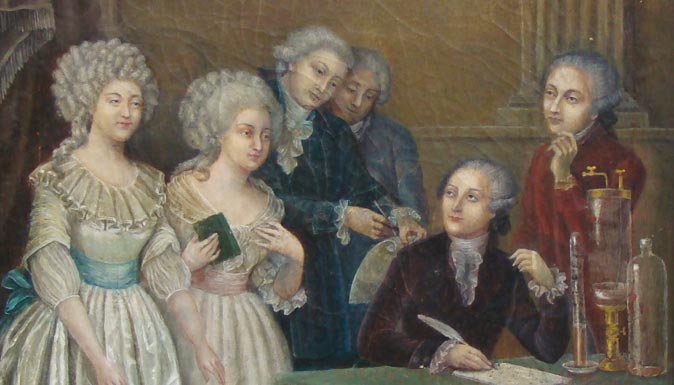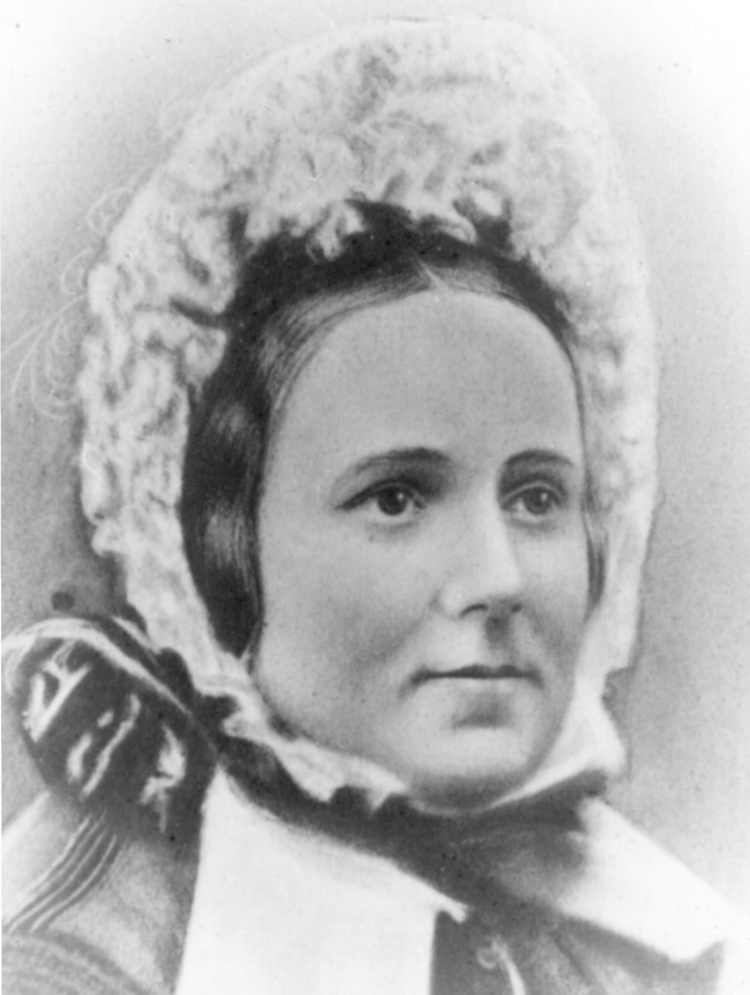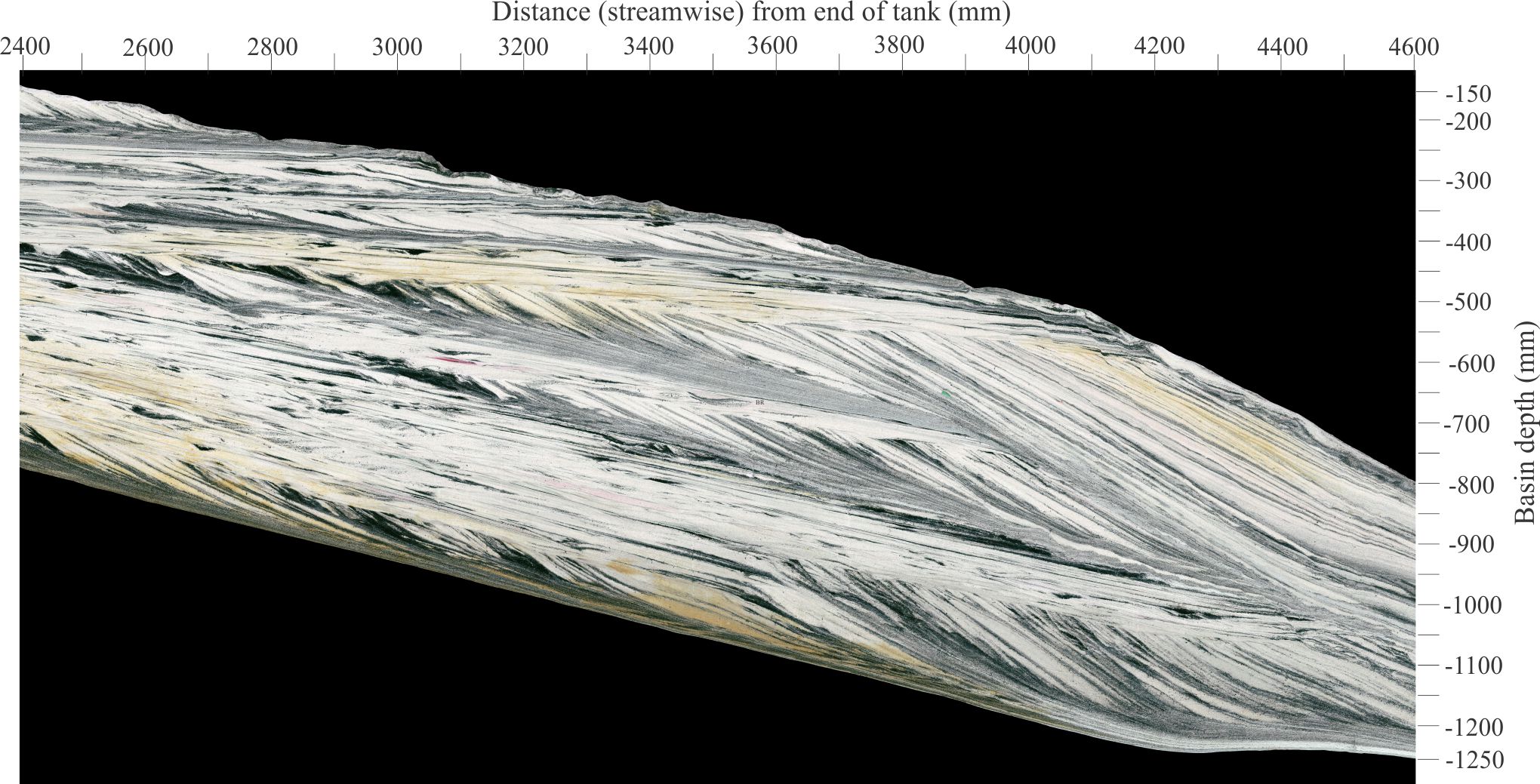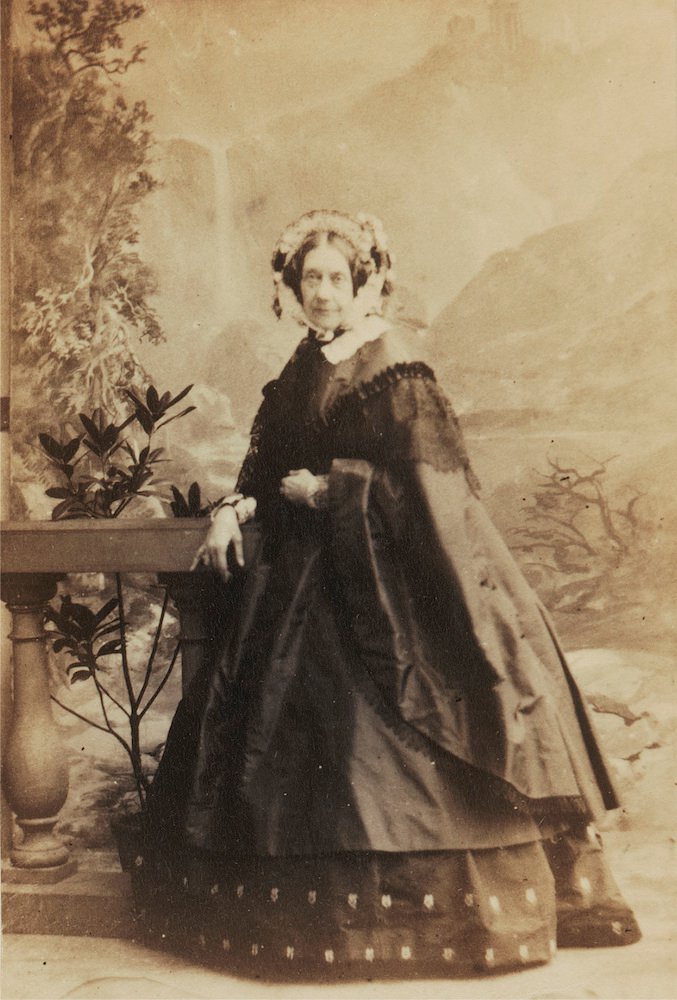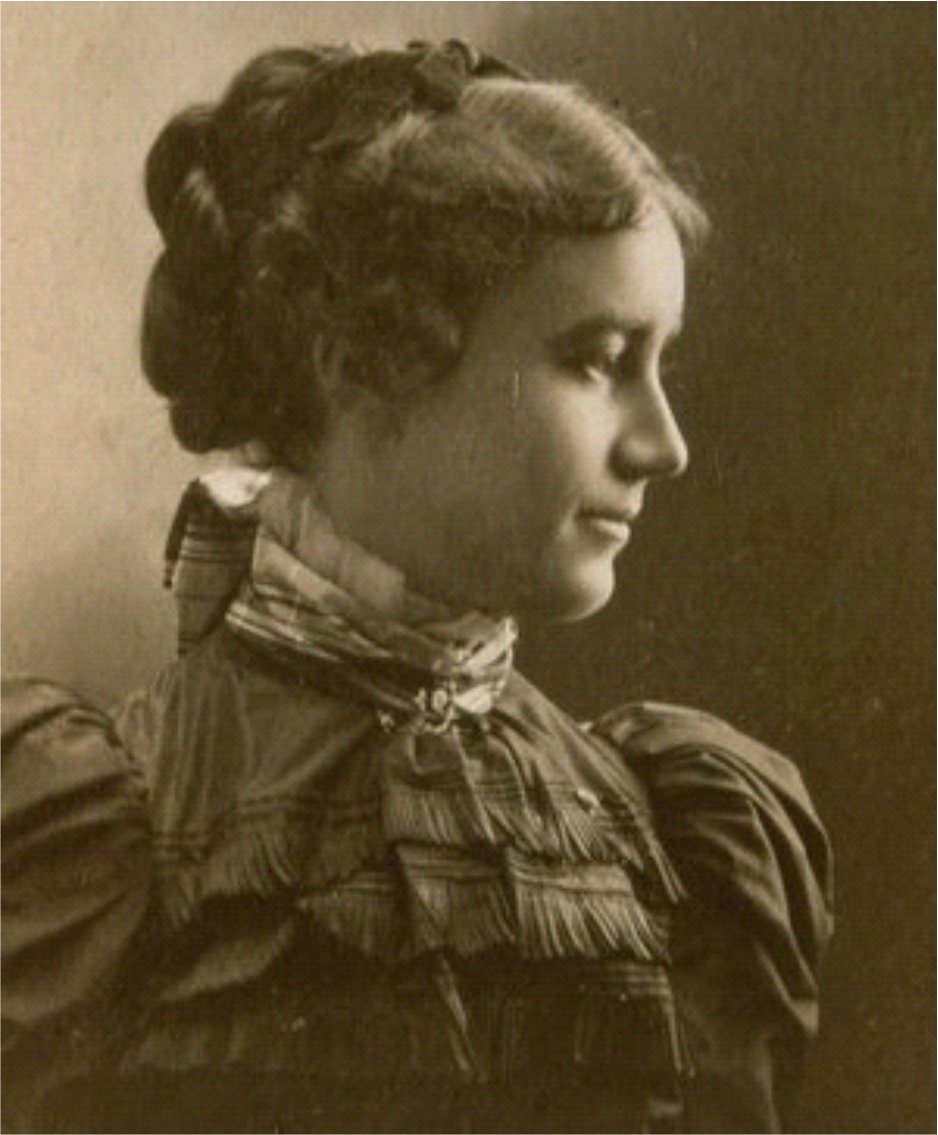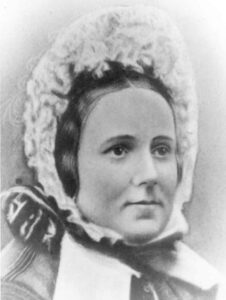
This biography is part of the series Pioneering women in Earth Sciences – the link will take you to the main page.
The scientific importance of the Jurassic Coast (southwest England) with its trove of fossil treasures, is inextricably tied to its late 18th and 19th century social history – a congruence underlain by the expectations of the role of women in a society founded on social status, and the competing demands of human inquisitiveness. Mary Anning’s name is inseparable from the geological records of discovery along the coast, particularly the environs of Lyme Regis. But the name Philpot is also associated, often in the same breath, with discovery and science communication to the broader public.
[The Jurassic Coast, along the south Dorset and Devon coasts, became a World Heritage Site in 2001]
The Philpot sisters, Mary (1777-11838), Elizabeth (1779-1857), and Margaret (1786-1845) moved to Lyme Regis in 1805, to a house purchased by their brother, a solicitor. All three became avid fossil collectors, but Elizabeth is perhaps best remembered for her scientific exploits as a friend and collaborator of Mary Anning. The Philpots had higher social standing than the Annings, and yet it seems their mutual scientific curiosities and investigations were more important – not unlike the relationship between Mary Anning and Charlotte Murchison. Elizabeth was also a friend of Mary Buckland, wife of the well-known theologian and paleontologist William Buckland, to whom she regularly corresponded.
Elizabeth and her sisters had amassed a substantial fossil collection in the decade before meeting a young Mary Anning. Their collection had already attracted the attention of other paleontological icons like Henry De la Beche, James Sowerby, Richard Owen, William Buckland, William Conybeare, John Lindley, William Hutton, and Louis Agassiz, all of whom benefited from access to specimens and their expertise in collecting and identifications, particularly Elizabeth’s. Anning also became acquainted with some these gentlemen, notably De la Beche and Buckland, and it is possible that Elizabeth was the go-between with introductions. Despite the importance of these scientific relationships, the elevation of either women in scientific circles never went beyond ‘honourable mentions’ in publications or at the meetings of societies like the Geological Society (to which all these gentlemen belonged).
Elizabeth had expertise in the group of fossils known as molluscs (mainly bivalves, gastropods (snails), and cephalopods (represented at Lyme Regis by ammonites and belemnites). She had also developed a penchant for and knowledge of fossil fish, that Louis Agassiz acknowledged in his Recherches sur les Poissons Fossiles (p. 23; Vol 1 – 1833-1845), following a visit with her and Mary Anning.

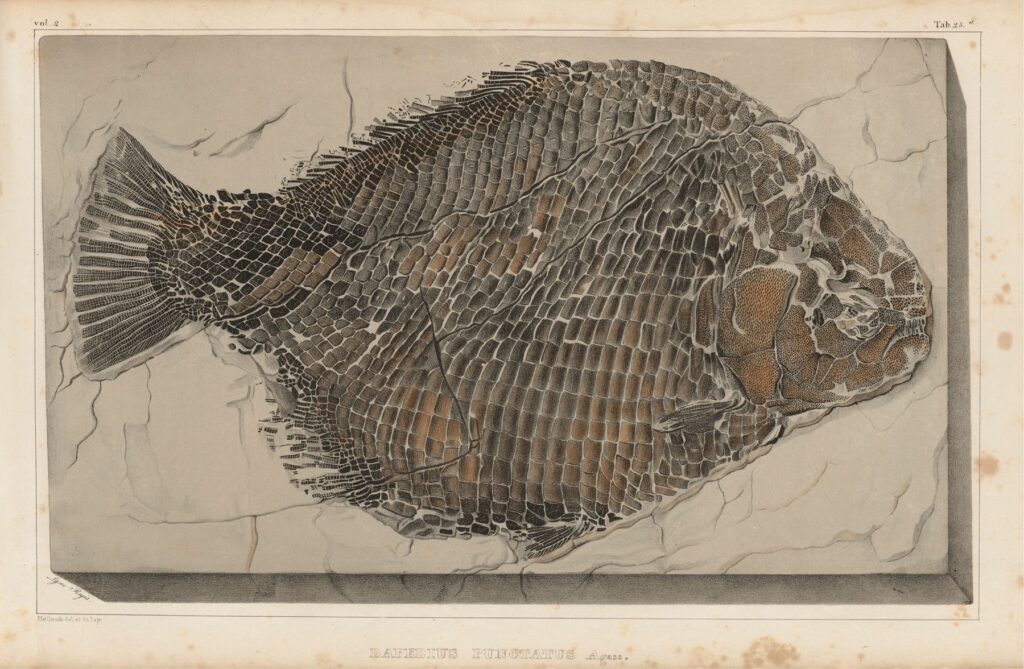
We are not privy to the conversations Elizabeth and Mary A had during their regular field excursions. But like field work between any two people, there is the constant looking out for one another other while scrambling across rocks (and through mud), all the time watching the tides and the constant risk of rock fall. A relationship beyond simple collegiality inevitably follows. We do know from Anning’s correspondence with Charlotte Murchison that she and Elizabeth would retire to either of their residences to compare specimens and search through the pages of a James Sowerby book on molluscs, discussing the pros and cons of each species identification (the quote below is from an 1833 letter to Charlotte):
“… you and Mr De la B. between you have given me the green Sand Mania, both Miss Philpot & myself have been beating bits of greensand to peices to find shells, and after our return we sit down an turn over the leaves of Sowerby untill our poor heads is compleate jumble of Bivalves univalves & Mr D having been so kind as to lend me his Sowerby – I think to be able to get you many specimens that are not named in this Book.” (spelling is Anning’s; Mr De la B is Henry De la Beche)
Elizabeth was also a skilled artist. One of her sketches of an ichthyosaur skull was originally included in a letter to Mary Buckland (1833). The skull had been unearthed by Mary Anning. The sketch owes its artistry, at least in part, to a discovery made by Anning in 1828, who identified what she call fossil sepia, or fossilised ink sacks associated with belemnites. The discovery was subsequently reported to the Geological Society by William Buckland (1829, Proceedings v. 1) and later confirmed by Louis Agassiz. Elizabeth had the ingenuity to reconstitute the powdery, fossilized ink that she subsequently used in the sketch.
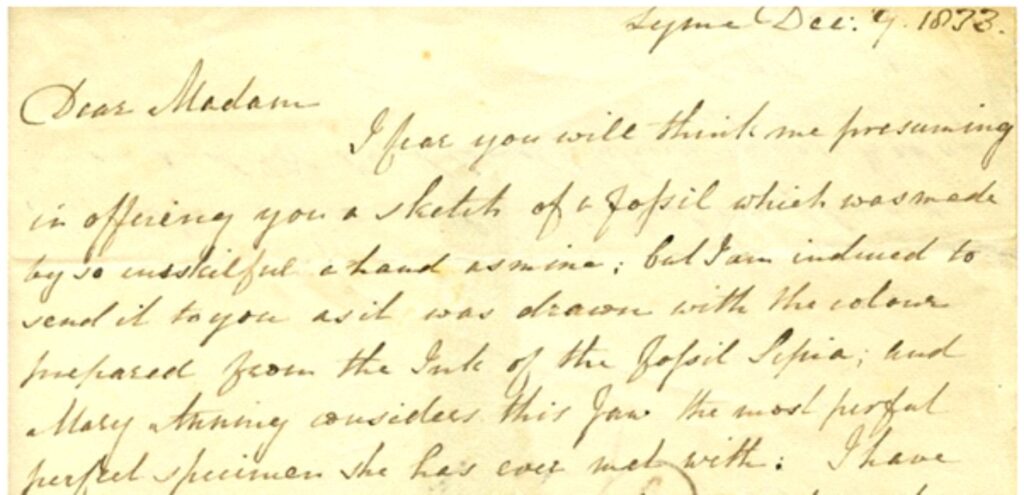
Dear Madam
I fear you will think me presuming in offering you a sketch of a fossil which was made by so unskilful a hand as mine. But I am induced to send it to you as it was drawn with the colour prepared from the ink of the Fossil sepia, and Mary Anning considers this jaw the most perfect fossil specimen she has ever met with.”
Part of the December 1833 letter to Mary Buckland that accompanied her sketch of the ichthyosaur skull collected by Mary Anning. Image credit: Susan Newell, Oxford University Museum of Natural History
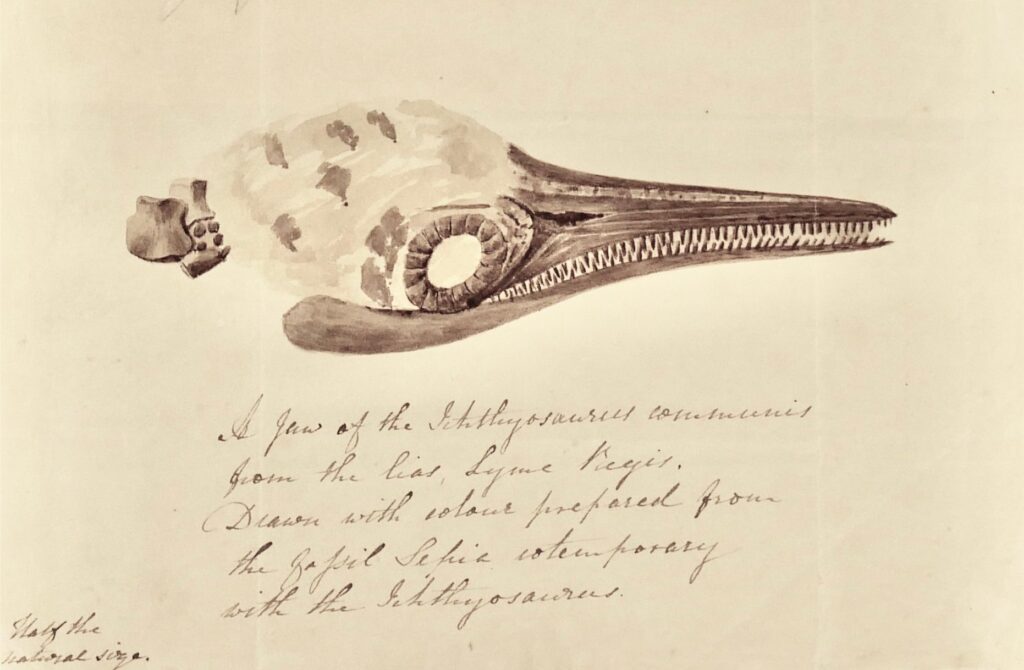
Most of the Philpot collection is now housed in the Oxford University Natural History Museum. The Lyme Regis Museum in addition to honouring the Philpot Sisters, was also commissioned by a relative, Thomas Philpot, in 1902. It was built on the former site of Mary Anning’s home, continuing the link between two of the world’s most important women paleontologists.

References and other links
William Buckland, 1829. On the discovery of a new species of Pterodactyl in the Lias at Lyme Regis. Transactions, Geological Society, London, Series. 2, v. 3, p. 217-222.
William Buckland, 1929 “On the discovery of a new species of Pterodactyle; and also of Faeces of the Ichthyosaurus; and of a black substance resembling Sepia in the Lias at Lyme Regis“, Proceedings of the Geological Society of London, vol 1, p. 96-98. Access from the Biodiversity Heritage Library.
Louis Agassiz, 1833-1845. Recherches sur les Poissons Fossiles, Tome 1.
Louis Agassiz, 1833-1845. Recherches sur les Poissons Fossiles Tome 2 Atlas. Access in Biodiversity Heritage Library.
J.M. Edmonds, 1978. The fossil collection of the Misses Philpot of Lyme Regis. Proceedings of the Dorset Natural History & Archaeological Society, v. 98, p. 43-48.
Museum of Natural History, University of Oxford, 2016. Tales from the Jurassic Coast.
Susan Newell. Mary Anning, fossil expert, anatomist and dealer. Museum of Natural History, University of Oxford.
Eliza Howlett , 2016. Elizabeth Philpot. Trowelblazers.
The Geological Society. Fossil sepia, described 1829.
Andrew Goudie and Denys Brunsden, 2023. Geological Pioneers of the Jurassic Coast. Oxford University Press.
